




Accidents happen, and when they do, it’s important to know how to remove blood stains from white clothes. Blood stains can be particularly stubborn, especially on light-coloured fabrics. But fear not, with a few simple steps, you can effectively banish those unsightly stains and restore your clothes to their former pristine condition.
First and foremost, it’s crucial to act quickly when treating blood stains. The longer they remain on the fabric, the more difficult they become to remove. So, don’t delay – let’s dive right into the steps for blood stain removal.
Gather your supplies
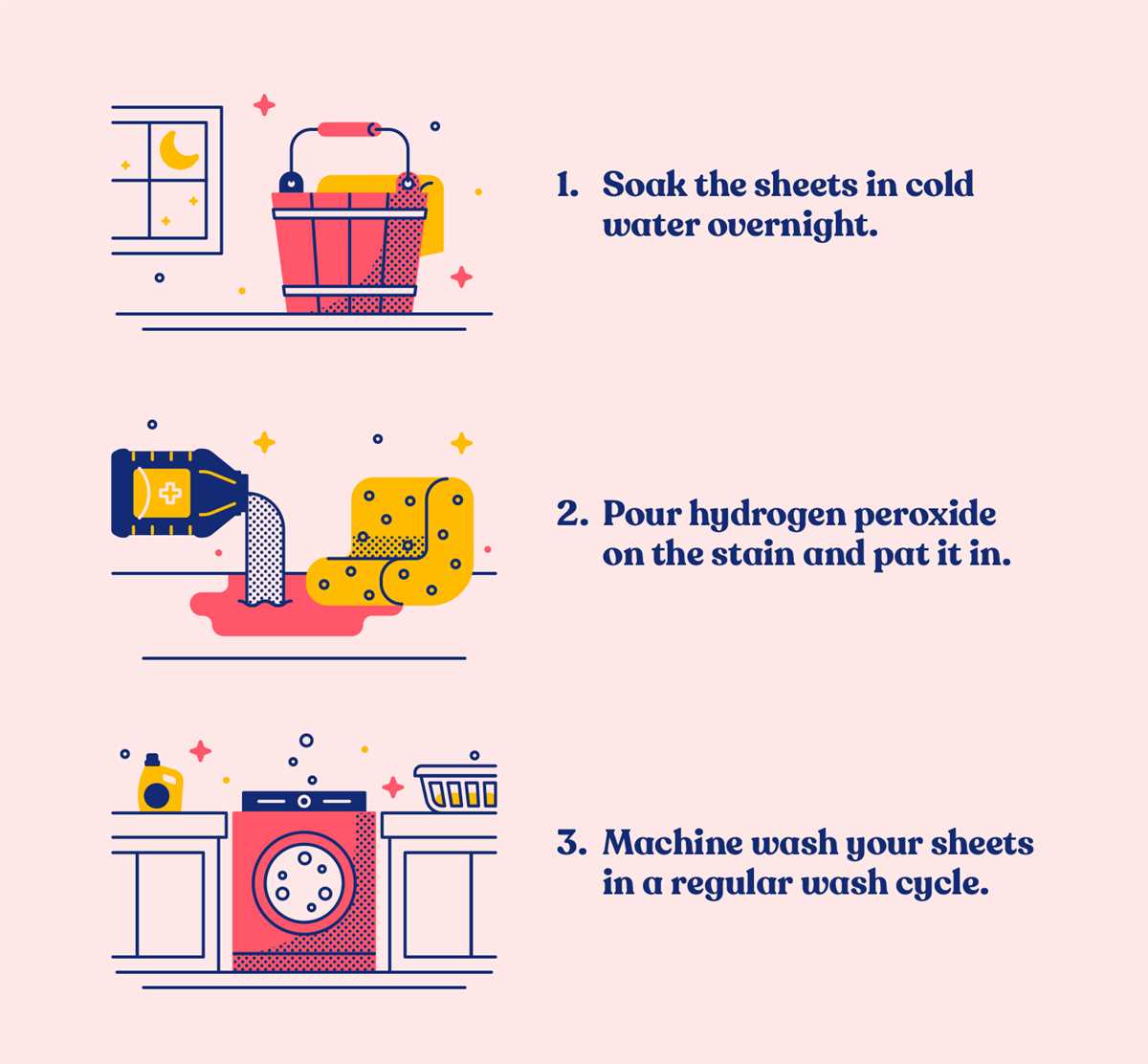
Before you get started, make sure you have the necessary supplies on hand. You’ll need cold water, mild laundry detergent, a clean white cloth or sponge, and a stain remover. It’s important to use a white cloth or sponge to avoid transferring any additional colours onto the garment.
What are blood stains and why are they difficult to remove?

Blood stains are the result of blood coming into contact with clothing or fabric. They can occur from various sources such as cuts, nosebleeds, or accidents. Blood is a protein-based stain that contains hemoglobin, which gives it its red color.
Removing blood stains can be particularly challenging due to the composition of blood. When blood dries, it forms a bond with the fabric, making it harder to remove. Additionally, the proteins in blood can coagulate and set the stain, making it even more stubborn.
Another reason blood stains are difficult to remove is that using hot water can actually set the stain, making it permanent. This is because heat can cause the proteins in the blood to coagulate and bond more strongly with the fabric fibers.
Furthermore, certain fabrics, such as silk or wool, may be more delicate and require special care when removing blood stains. Harsh chemicals or scrubbing vigorously can damage these fabrics, making the stain removal process even more challenging.
Overall, blood stains can be tough to remove due to their protein-based composition, the coagulation of proteins when dried, and the potential damage that can occur when using improper cleaning techniques or products. It is important to take prompt action and follow the appropriate steps to increase the chances of successful stain removal
Step 1: Immediate Action

In order to increase your chances of successfully removing blood stains from white clothes, it’s important to take immediate action as soon as you notice the stain. The longer the blood sits on the fabric, the harder it will be to remove.
Here are some steps you can take right away:
- Blot the stain: Start by gently blotting the stain with a clean, white cloth or paper towel. Avoid rubbing as this can push the stain further into the fabric.
- Cold water rinse: Rinse the stained area under cold running water to dilute and remove as much of the blood as possible. Make sure to use cold water, as hot water can set the stain.
- Pre-treat with hydrogen peroxide: If the stain persists, try applying a small amount of hydrogen peroxide directly on the stain. Test the peroxide on an inconspicuous area of the fabric first to ensure it doesn’t cause any discoloration. Let it sit for a few minutes and then rinse again with cold water.
Note: If the stained clothing is delicate or requires dry cleaning, it’s best to avoid using hydrogen peroxide and instead take it to a professional cleaner.
By taking immediate action with these steps, you can minimize the chances of the blood stain setting and improve your chances of successful removal.
Gently blot the stain with a clean cloth
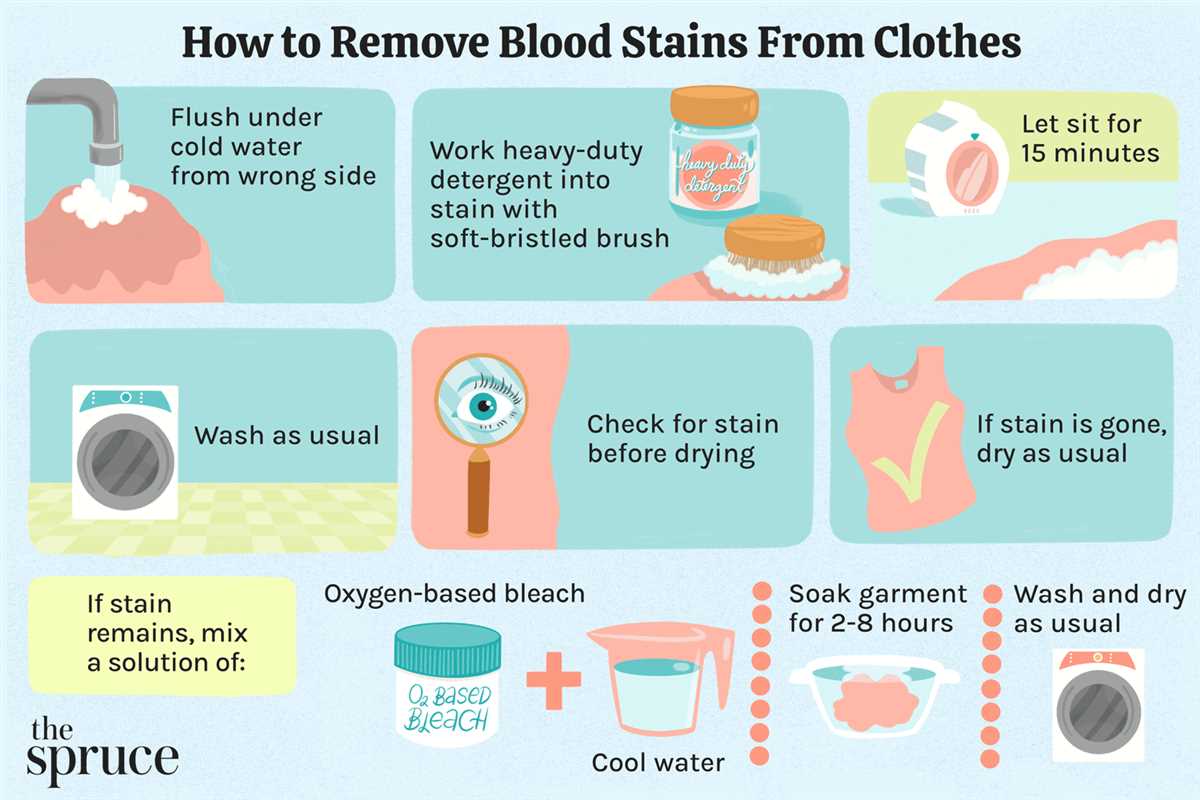
Once you have removed as much of the excess blood as possible, it’s important to proceed with caution. Blotting the stain with a clean cloth is a gentle yet effective method to begin the stain removal process.
Before you start blotting, it’s important to remember not to rub the stain. Rubbing can cause the stain to spread and penetrate the fabric even further, making it more difficult to remove. Instead, use a soft, white cloth and gently blot the stain. This will help to lift the blood from the fabric without spreading it around.
Make sure to use a clean part of the cloth with each blot to avoid reapplying the stain onto the fabric. If the cloth becomes saturated with blood, switch to a fresh one to prevent recontamination.
Be careful not to scrub or apply too much pressure while blotting, as it may damage the fabric or push the stain deeper into the fibers. Let the cloth do the work by applying light pressure and allowing it to absorb the blood.
Continue blotting the stain until no more blood transfers onto the cloth. It may take several repetitions to completely remove the stain, especially if it is a stubborn or older stain.
Step 2: Preparing the Cleaning Solution

Once you have soaked the stained garment in cold water, it’s time to prepare the cleaning solution. This solution will help remove the blood stain from your white clothes. Follow the steps below:
- Get a clean bowl.
- Add 1 tablespoon of salt to the bowl.
- Add 1 cup of cold water to the bowl.
- Stir the mixture well until the salt dissolves completely.
- If the stain is particularly stubborn, you can also add a small amount of laundry detergent to the mixture. Use a gentle, bleach-free detergent.
Once you have prepared the cleaning solution, you are ready to move on to the next step.
Mix cold water and enzyme-based detergent
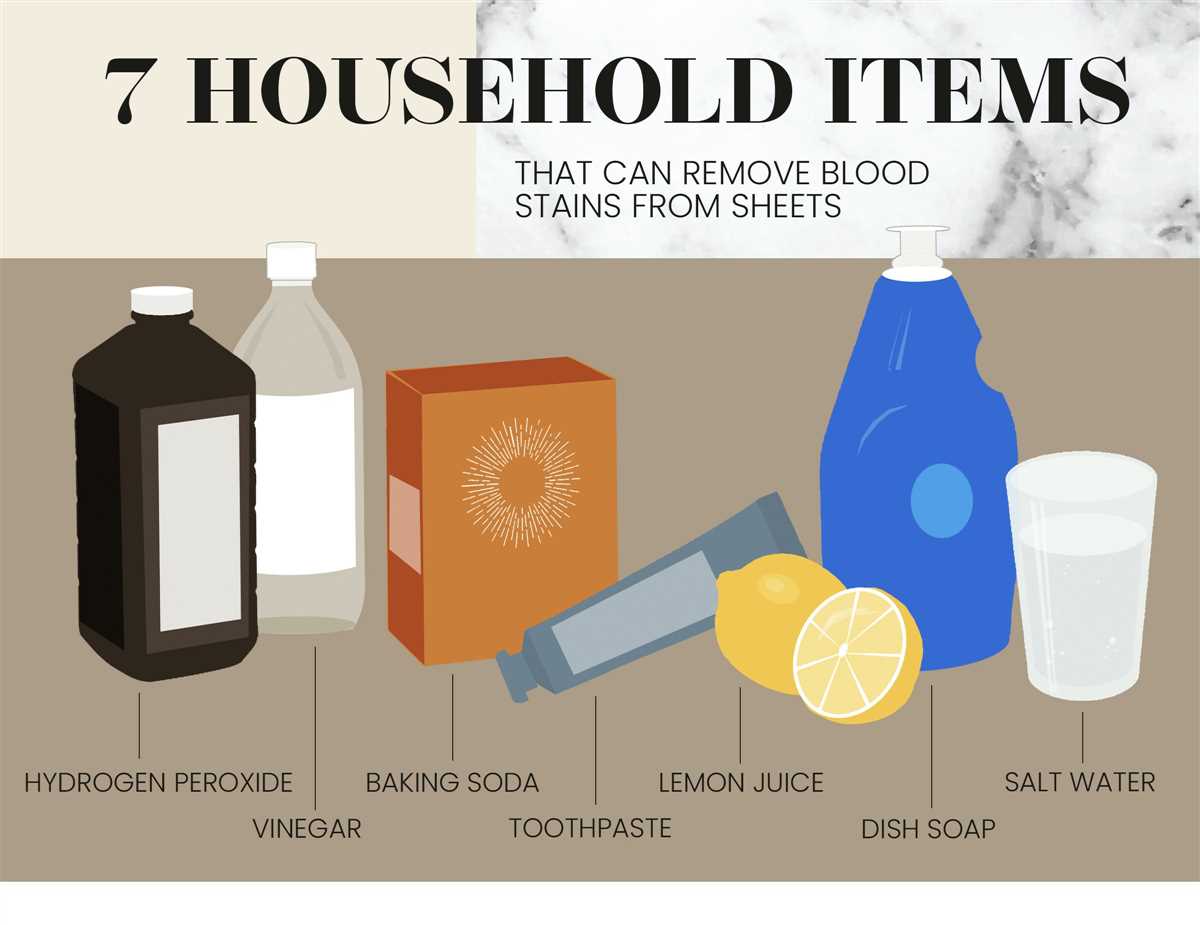
Once you have treated the blood stain with cold water and blotted it, it’s time to create a stain removal solution. This step requires mixing cold water and enzyme-based detergent.
- Fill a clean basin or sink with cold water.
- Add the recommended amount of enzyme-based detergent to the water. The packaging should provide instructions on the appropriate amount to use.
- Stir the mixture gently to ensure that the detergent is evenly distributed in the water.
Note: Enzyme-based detergents are particularly effective at breaking down and removing protein-based stains like blood. The enzymes in the detergent work to break down the proteins in the stain, making it easier to remove.
Make sure to use cold water for this step, as warm or hot water can actually set the stain and make it more difficult to remove.
Step 3: Treating the Stain
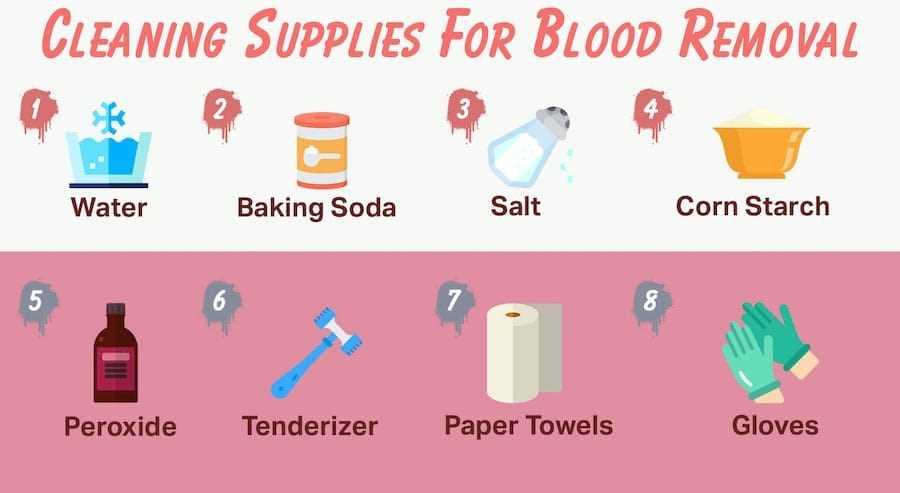
Once you have removed as much of the blood stain as possible with cold water, it’s time to treat the remaining stain. Here’s how:
- Mix a cleaning solution: In a small bowl, combine 1 tablespoon of liquid dish soap with 2 cups of cold water. Stir well to create a soapy solution.
- Apply the cleaning solution: Dip a clean cloth or sponge into the soapy solution and gently dab it onto the remaining blood stain. Make sure to saturate the stain completely. Let the solution sit on the stain for 10-15 minutes to allow it to penetrate and loosen the stain.
- Gently scrub the stain: After the stain has soaked, use a soft-bristled toothbrush or a clean cloth to gently scrub the stain in a circular motion. Be careful not to scrub too vigorously, as it may damage the fabric.
- Rinse with cold water: Rinse the garment thoroughly with cold water to remove the cleaning solution and any loosened blood particles. Check the stain to see if it has faded. If it’s still visible, repeat steps 2 and 3 until the stain is completely gone.
- Blot dry: Once the stain is completely removed, gently blot the area with a clean towel to absorb excess water. Avoid rubbing the fabric, as it can cause friction and damage the fibers.
By following these steps, you can effectively treat and remove blood stains from your white clothes, restoring them to their original condition.
Apply the cleaning solution to the stain and let it sit
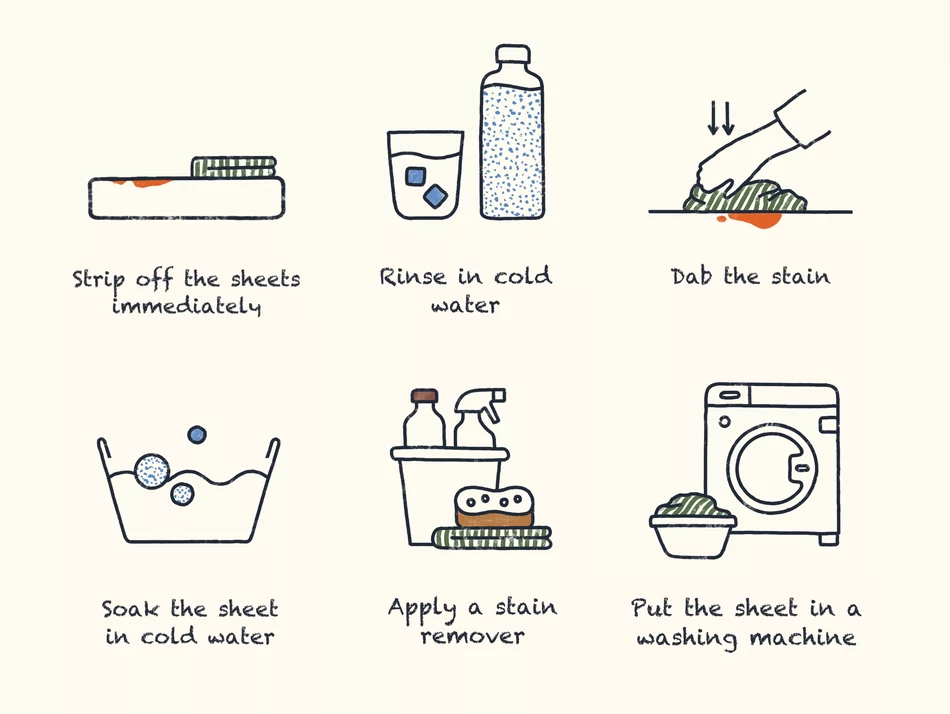
Once you have prepared the cleaning solution according to the previous step, it’s time to apply it to the blood stain on your white clothes. Make sure to use a clean cloth or sponge and gently dab the stain with the cleaning solution. Avoid rubbing the stain, as this can cause the blood stain to spread and set deeper into the fabric.
After applying the cleaning solution, allow it to sit on the stain for approximately 10-15 minutes. This will give the solution enough time to penetrate the stain and break down the blood particles.
If you’re working with a delicate fabric, such as silk or lace, it’s important to test the cleaning solution on a small, inconspicuous area of the fabric first to ensure it does not damage or discolor the garment.
During the waiting period, avoid touching or tampering with the stain, as this may disrupt the cleaning process. Instead, you can use this time to gather any additional supplies or prepare the next step in the stain removal process.
FAQ
What is the best way to remove blood stains from white clothes?
The best way to remove blood stains from white clothes is by using cold water and a mild detergent. You should soak the stained area in cold water for about 30 minutes, then gently rub the stain with a solution of water and mild detergent before rinsing it again in cold water.
Can I use hot water to remove blood stains from white clothes?
No, hot water should not be used to remove blood stains from white clothes as it can actually set the stain in the fabric. Using cold water is recommended to prevent the stain from becoming more difficult to remove.
Is it necessary to pre-treat blood stains before washing the clothes?
Yes, it is necessary to pre-treat blood stains before washing the clothes. You can create a paste using water and enzyme-based laundry detergent and apply it directly to the stain. Let it sit for a few minutes before rinsing with cold water.
What if the blood stain is already dried?
If the blood stain is already dried, you can try soaking the garment in a mixture of cold water and enzyme-based laundry detergent overnight. Then, gently rub the stain with a soft brush or sponge before rinsing it with cold water and laundering as usual.
Are there any alternative methods to remove blood stains from white clothes?
Yes, there are alternative methods to remove blood stains from white clothes. Some other options include using hydrogen peroxide, ammonia, or lemon juice. However, it is important to perform a spot test on a small, inconspicuous area of the fabric before applying these solutions to the stained area.
What is the best way to remove blood stains from white clothes?
The best way to remove blood stains from white clothes is to act quickly. Rinse the stain with cold water, then soak the garment in a mixture of cold water and enzyme-based stain remover for about 30 minutes. After soaking, gently rub the stained area with either liquid laundry detergent or a paste made from baking soda and water. Finally, wash the garment as usual, using chlorine bleach for whites if necessary.
Can I use hot water to remove blood stains from white clothes?
No, it is not recommended to use hot water when trying to remove blood stains from white clothes. Hot water can cause the protein in the blood to coagulate, making the stain more difficult to remove. It is best to use cold water for rinsing and soaking the garment, as well as for diluting any stain-removing solutions.














